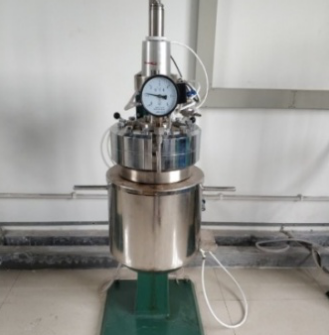High-performance catalysts
High-performance catalysts







Ge Wang Professor at the University of Science and Technology Beijing, Changjiang Distinguished Professor
Xingtian Shu Deputy Chief Engineer at the Research Institute of Petroleum Processing, Academician of the Chinese Academy of Engineering
Jihong Yu Professor at Jilin University, Academician of the Chinese Academy of Sciences
Wenjun Dong Professor at the University of Science and Technology Beijing
Hongyi Gao Lecturer at the University of Science and Technology Beijing
【Chief members】
Ge Wang Professor at the University of Science and Technology Beijing
Xingtian Shu Deputy Chief Engineer at the Research Institute of Petroleum Processing
Jihong Yu Professor at Jilin University, Academician of the Chinese Academy of Sciences
Wenjun Dong Professor at the University of Science and Technology Beijing
Hongyi Gao Lecturer at the University of Science and Technology Beijing
【Research Background】
Environmental pollution and energy shortage are two major challenges faced by the world today. The development of new catalytic materials can promote the clean and efficient use of resources as well as the transformation and upgradation of traditional industries, and is therefore strategically important for improving the capability of achieving scientific and technological innovation and realizing sustainable development in China. However, the existing approaches adopting post-synthesis tests cannot satisfy the urgent needs for high-performance catalytic materials in the modern era. The materials genome engineering concept provides a new direction for the research and development of catalytic materials. Utilizing the most advanced computer technology, materials genome engineering can in theory predict a considerably larger number of new catalytic materials, and when combined with large amounts of experiment data, can establish a database for the composition, structure, morphology, and property of such materials. Once a database is constructed, the correlation between the structure and performance can be explored through data mining. Therefore, catalytic materials with a superior performance can be discovered in a shorter timeframe and at a lower cost, greatly improving the research and development level of catalytic materials in China.
【Research Objectives】
To meet the national strategic demand for high-performance catalytic materials in the petrochemical, new energy, and environmental fields, our team has integrated a high-throughput calculation technology with a high-throughput synthesis technology to achieve the prediction and optimization of catalytic materials. In addition, by investigating the correlations between the chemical composition, microstructure, absorption configuration of the reactants, and the electron transfer and transformation pathways of porous catalytic materials (such as molecular sieves and metal-organic frameworks), the catalytic reaction mechanism can be revealed. On this basis, our team can produce a series of catalytic materials of high significance. Furthermore, high-performance catalytic materials can be screened, and a scale-up of their preparation, as well as their mass production and industrial demonstration, can then be achieved. This will improve the independent innovation capability and core competitiveness of the new catalytic materials industry in China, thereby promoting the national development of the materials genome engineering sector.
【Main Research Areas】
1. Development of high-throughput calculation and data mining technologies for catalytic materials.
2. Development of high-throughput synthesis and performance evaluation technologies for catalytic materials.
3. Establishment of mass production and industrial demonstration of catalytic materials.
4. Construction of a dedicated database for catalytic materials.
【Significant Research Progress】
1. High-throughput calculations and a database construction of porous catalytic materials
Our team has established, for the first time in the world, a theoretical method based on the restricted area and electron density map for the design of molecular sieves with a specific pore structure. According to the concept of materials genome engineering, a computer method for the high-throughput prediction and screening of novel porous catalytic materials has been introduced, which successfully completed the 102-level concurrent calculation of molecular sieve structures. In addition, a dedicated database for porous catalytic materials has been constructed, which includes more than 200,000 structural models of catalytic materials for molecular sieves. A high-throughput calculation software platform has also been preliminarily established for porous catalytic materials used in molecular sieves. Furthermore, utilizing computer data mining technology, our team has investigated the correlation between the synthesis parameters and structural properties of porous materials, and for the first time discovered the catalytic mechanism of hydroxyl radicals in the crystallization of molecular sieves. Finally, our team has proposed directed synthesis pathways under the guidance of the template direction, heteroatom substitution, and data mining. In particular, a directed synthesis pathway under the combined guidance of both computational and combinatorial chemistry has been established, based upon which a series of novel high-performance porous catalytic materials has been successfully synthesized.

Fig. 1 Editing interface of high-throughput calculation software platform for porous catalytic materials
2. High-throughput synthesis and scale-up preparation of porous catalytic materials
A high-throughput hydrothermal synthesis device of 128 batches was constructed, which has been utilized to conduct the directed synthesis of high-performance molecular sieves. In addition, the scale-up preparation of these molecular sieves in a 10L autoclave was completed. The high-performance MTO catalyst exhibits a diene (propylene and ethylene) selectivity of over 86% as well as a considerably improved stability. The scale-up preparation of molecular sieves in a cubic-meter-scale crystallizing reactor was completed with the aid of this catalyst. Based on the experimental results, a new model including all procedures from theoretical prediction to experiment verification, as well as the application and demonstration regarding the research and development of porous functional materials, has been well established.


Fig. 2 High-throughput synthesis and scale-up preparation of molecular sieves
